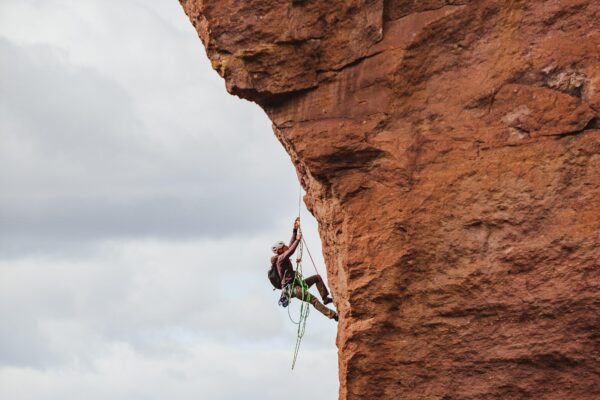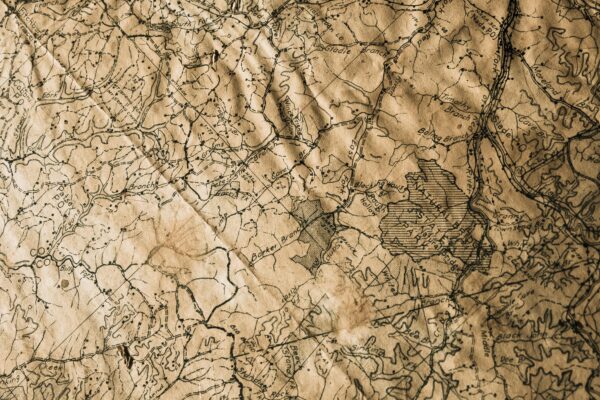
I recently had the opportunity to give a workshop for World Economic Forum Young Global Leaders called “A Short Guide to Achieving Big Things,” with some help from friends and fellow “YGLs” Angela Sun, Kristin Rechberger and April Rinne. The workshop highlighted underlying patterns for how people accomplish very large goals that require the efforts of many people over a long period of time.
Think, for instance, about Jacqueline Novogratz who started Acumen at the age of forty in 2001. At the time, the field of impact investing didn’t exist. She had a fundamental belief that markets could be harnessed to drive transformational solutions to poverty, and a vision to build a fund that could demonstrate this. Acumen has now invested $83m and leveraged several times that in capital for others, taking positions in 75 companies who employ 58,000 people and have touched more than one hundred million lives.
One of the participants in the workshop was Mark Pollock, now thirty eight. Mark is an athlete and explorer, who refused to let turning blind in his early twenties hold him back and in 2009 became the first blind man to reach the South Pole. The year after this achievement, Mark fell from a second-story window and was paralyzed. He is making it his life’s work to accelerate a cure for paralysis, and is working with the scientific community to explore how to integrate physical therapy, electrical stimulation and robotics. Is there a pattern to how people achieve the magnitude of impact on the world that Jacqueline has? Are there ways to think systematically about how over the course of the next decade someone like Mark can maximize the scale of the impact he’s seeking to make in the world?
Think about the earliest, most basic form of human agency. An infant reaches for a toy just beyond his grasp and cries out. At this most basic level, action follows instinct. As children grow and as adults develop, agency reaches further outwards in time and upwards in level of complexity.
At the far end of this spectrum of human agency, think of Gaudi designing and building Sagrada Familia. Gaudi reimagines the most ambitious of architectural forms, from its overall structure and form to its smallest organic details. Gaudi began his work on the project at thirty; when Gaudi died at seventy-three, the project was perhaps a quarter complete. Completion is expected in 2026, one hundred years after his death.
We take for granted that as we grow up, we ascend levels of agency like a set of stairs, learning to reach further out in time and upward in magnitude and difficulty. Yet most of us, at some point, stop climbing. If Sagrada Familia represents the outer edge of what we might learn to climb towards, what does it look like to continue this journey beyond where most of us stop: toward what Jacqueline has achieved with Acumen and what Mark aspires to achieve in the treatment of paralysis?
At the YGL session, we explored four patterns that represent parts of the core of an answer to this question.
1. Clarifying commitments. Big and clear commitments enable us to reach further outwards in time, working backwards from horizons we don’t yet know how to achieve, toward building blocks that are just within our reach. As I described with Solutions Journalism Network, for instance, an eternal commitment to “journalism as an effective feedback loop for society” can be translated back to a long-term vision to make solutions journalism as integral a form in a decade as investigative journalism is today. That clear commitment can then be translated into a “ladder” of objectives, the first “rung” of which – such as a certain number of demonstrations, network of practitioners, codification of teachable methods, scale of funding and resources – can in turn be used to guide specific people engaged in specific streams of work.
2. Building a model for exponential impact. Suppose a big commitment requires reaching 1,000x the level of impact that one is positioned to achieve today. Achieving this requires exponential growth, what Einstein meant when he marvelled at the power of the force of compound interest. Forces that can grow exponentially in a sustainable way over a long period of time dwarf forces that cannot.Some exponential forces, such as software-based businesses and fashions, can scale very fast – and of these, some prove ephemeral (fads), some recurring (e.g., Occupy Wallstreet) and some lasting. Equally or more important, some forces scale at moderate rates, sustainably, for very long periods of time. This process creates multiple phase changes, which need to be successfully created and navigated. At the workshop, we discussed Aravind Eye Care System, which was founded in 1976 as an eleven-bed eye care hospital with a mission to serve the poor, reached 11,000 surgeries in 1981, and 300,000 in 2009, making it by far the largest organization of its kind in the world. This represents 13% annual growth in the volume of surgeries, and perhaps 20% per year in total impact when one considers Aravind’s work in the manufacture of low-cost surgical inputs as well as their research, teaching and consulting.20% annual growth delivers 1,000x impact in thirty eight years, a little less than the time Gaudi was able to spend on Sagrada Familia. 50% annual growth, such as the global growth of bike sharing programs over period of many years, reaches a 1,000x multiplication in seventeen years. 350% annual growth, like the growth in Facebook’s user base as it was growing from 10m to 100m users and beyond, delivers 1,000x multiplication in four and a half years. Each of these exponential growth rates requires its own distinct discipline and design elements. By having a clear conception of what exponential model best serves one’s commitment, one can make design decisions that promote not just achieving rapid growth but sustaining it over the long haul.
3. Selecting the best contexts. Achieving anything large generally requires harnessing the force of institutions. One of the questions that fellow YGLs generally wrestle with is what form of relationship with what institutions best supports their aspirations. Should one be a founder, or work within a large institution? What is the best way to reconcile the needs and logic of an organization with the drive toward a personal vision?In the workshop, we explored a palette of ways that people relate to organizations. For instance, contrast Tim Brown, who as CEO of IDEO is building on the traditions he has inherited from the firm’s earlier generation of leaders with Lou Gerstner, whose role as CEO of IBM was to drive transformation. Contrast John Seely Brown, the intrapreneur who led Xerox PARC for many years, with Jony Ive, who has been the driver and guardian of Apple’s design vision. Sometimes a relationship with a significant institution is more that of a symbiont, like Al Gore’s role as partner at Kleiner Perkins, which provides one element of a broad portfolio of affiliations that advance his vision. Founders relate very differently to their creations as well. Lawrence Lessig’s Mayday PAC is built to create its own obsolescence, where Bill Drayton’s Ashoka has been built to function as a lasting vehicle to nurture and scale social entrepreneurship and change-making. Much of what we discussed as we looked at these models is the value of opening up more degrees of freedom in terms of thinking about all the different ways to relate to institutions – to one or to many – as platforms for achieving large things. Rarely is the choice just “found, build or join.” Our choices of contexts in which to advance our dreams are generally more nuanced and more various than we recognize at first.
4. Engaging a big enough, deep enough “we.” The question of action in concert is broader than the question of institution building. There are many forms of “we” that act together. The most immediate form of “we” could be called an endeavor: a group of people who commit, each with all the others, to pursue a joint goal. Think co-authors writing an article, entrepreneurs in their garage, or neighbors around a kitchen table making common cause. It is this “we” of mutuality of which Margaret Mead said: “Never doubt that a small group of thoughtful, committed citizens can change the world; indeed, it’s the only thing that ever has.”This small “we” of the endeavor grows in force as it gains breadth. Mark Pollock’s quest to accelerate a cure for paralysis will require many actors: scientists, the companies commercializing their innovations, activists, funders, regulators, journalists telling the story, and citizens participating in events. With breadth comes the challenge of coherence: focusing effort, sustaining energy, and holding to a shared core of meaning that integrates many actors who care about different things or different facets of what they hold in common. At the workshop, Angela Sun shared her early experience of creating Culture Shed as a new cultural institution in New York’s Hudson Yards. She told the story of how much weaving together of different individuals and institutions is required to build a place where art can happen on a vastly public scale.
As the members of this impressive YGL group reflected on the four patterns, we found again and again how intertwined they are. For instance, as Acumen has expanded, its commitments have become broader: the model of investing has become one pillar standing alongside commitments to knowledge and talent. The circle of Acumen’s “we” has expanded, through alumni of its Fellows program who now number nearly two hundred, chapter members who number in the thousands, and an extended professional community focused on impact investing that has grown far beyond what Jacqueline could ever have envisioned in the early days of Acumen. The problem of poverty still reaches vastly beyond the current scale of Acumen and the scale of the impact investing field as a whole, pulling Jacqueline and Acumen through the question of what models can continue to support exponential growth over the generation to come and toward a larger space of possibilities.
This capacity to grow and capacity to choose what to put our growth in service of is at the core of what makes us human. It was inspiring to be part of this conversation of peers, pushing back the frontier of what all of us know about these patterns of achievement, and taking strength from one another’s sparks of imagination and fierceness of resolve.



